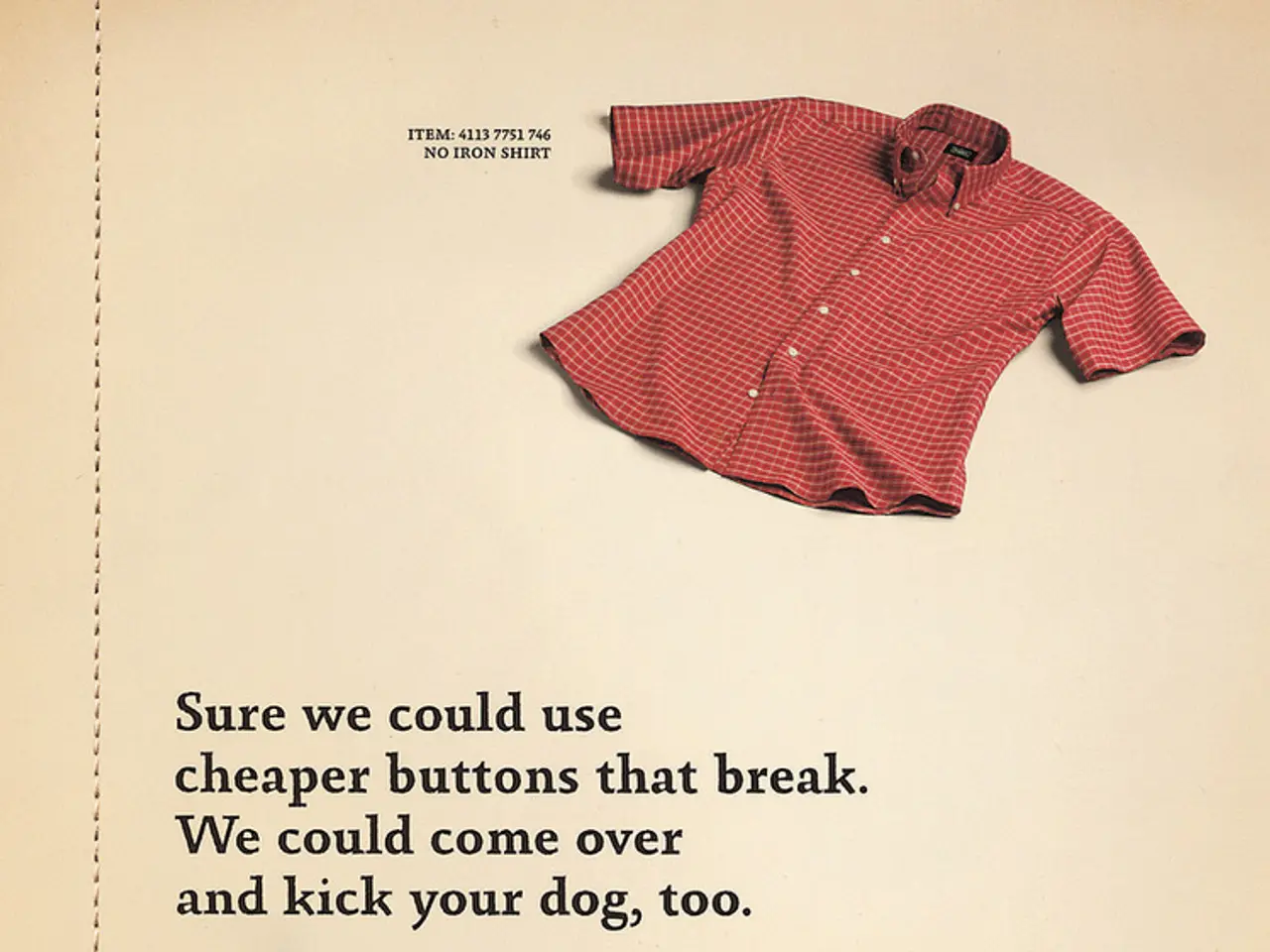Reading Pattern Strategy: Maximizing Your Content Efficiency
In the digital age, creating a website that captivates and engages visitors is crucial for any business. One design strategy that has proven effective in achieving this goal is the F-shaped pattern. This pattern, identified through eye-tracking studies, leverages natural scanning behaviors to guide users' eyes across a page, making content easier to navigate and more engaging [1][3][4].
The F-pattern follows a distinct path, starting at the top left and moving across and down in an "F" shape. This pattern is particularly useful for text-heavy pages such as blog posts, news articles, and long-form content, where users tend to scan from left to right, focusing on the start of paragraphs and bullet points, and then skim the rest [1][3][4].
Key Best Practices for F-Shaped Pattern Design
1. **Place Critical Information First** - Position the most important content, headlines, and calls-to-action (CTAs) at the top of the page, especially along the top horizontal and left vertical lines of the F-shape, where users' eyes naturally land first [3][4]. Use clear, bold headings and subheadings to break up text and guide the eye downward.
2. **Structure Content for Skimmability** - Use shorter sentences, bullet points, and numbered lists to facilitate quick scanning [3]. Align core information toward the left edge, as users pay more attention to the left side of the page due to the F-pattern’s vertical track [1][5].
3. **Highlight CTAs Strategically** - Place primary CTAs within the F-shaped hot zones, typically at the top and along the left margin, to maximize visibility and click-through rates [1]. Ensure CTAs stand out visually—consider using contrasting colors and ample white space [1].
4. **Use Visual Cues and White Space** - Employ imagery, icons, or color highlights on the left vertical axis to draw attention and support the F-shaped scan [5]. Use white space intentionally to reduce clutter and improve readability, making key elements easier to spot [1].
5. **Test and Optimize** - Use heatmaps and A/B testing to see how users actually interact with your layout, and make adjustments accordingly [1]. Iteratively refine content placement based on user behavior data.
By following these best practices, your website will be more engaging and user-friendly, encouraging visitors to read and act on your most important content [1][3][4]. Businesses can expect more engaged visitors who stay longer on their websites and are more likely to convert into paying customers over time with the thoughtful implementation of the F-pattern.
Placing key content (headlines, keywords, CTAs) at the top left grabs attention quickly. By optimizing content around the F pattern, businesses can enhance their users' journeys, give them friendly layouts, and improve SEO performance. It is important to ensure all content is easily readable and scannable, with clear headings for each section.
When designing for the F-pattern, it is important to consider mobile devices as well. Mobile-friendly web content and design are essential for providing users with a positive experience on mobile devices. Icons or photos should be included where applicable to increase engagement with content on mobile devices.
In conclusion, the F-shaped pattern offers a valuable tool for website designers, helping to capture attention, keep visitors interested, and guide them to take action. By understanding and implementing the F-pattern, businesses can create a more engaging and effective online presence.
References: [1] Nielsen, J. (2006). Eye-tracking Web Usability: A Review of 35 Studies. Nielsen Norman Group. [2] Kuniavsky, A. (2013). Observing the User Experience: A Practitioner's Guide to User Research. Morgan Kaufmann. [3] Polson, N. (2014). The F-Shaped Pattern: How Users Read on the Web. Smashing Magazine. [4] Tahir, A. (2019). The F-Pattern: A Guide to Designing for Web User Behavior. UX Collective. [5] UX Collective (2020). The F-Pattern: What It Is and How to Use It in UX Design. UX Collective.
- By strategically placing critical information at the top left, businesses can capture visitor attention quickly and guide them through the F-shaped pattern more effectively.
- Optimizing content for the F-pattern on mobile devices is crucial for providing a positive user experience and increasing engagement, as visitors tend to scan mobile content in a similar manner.




